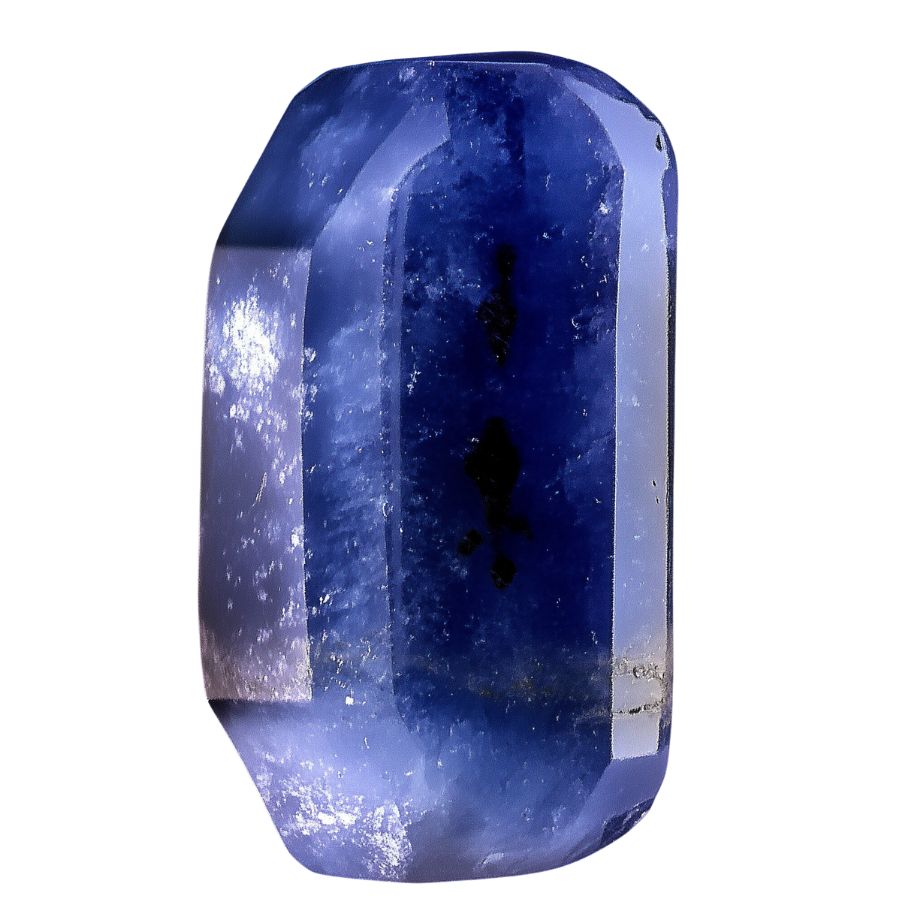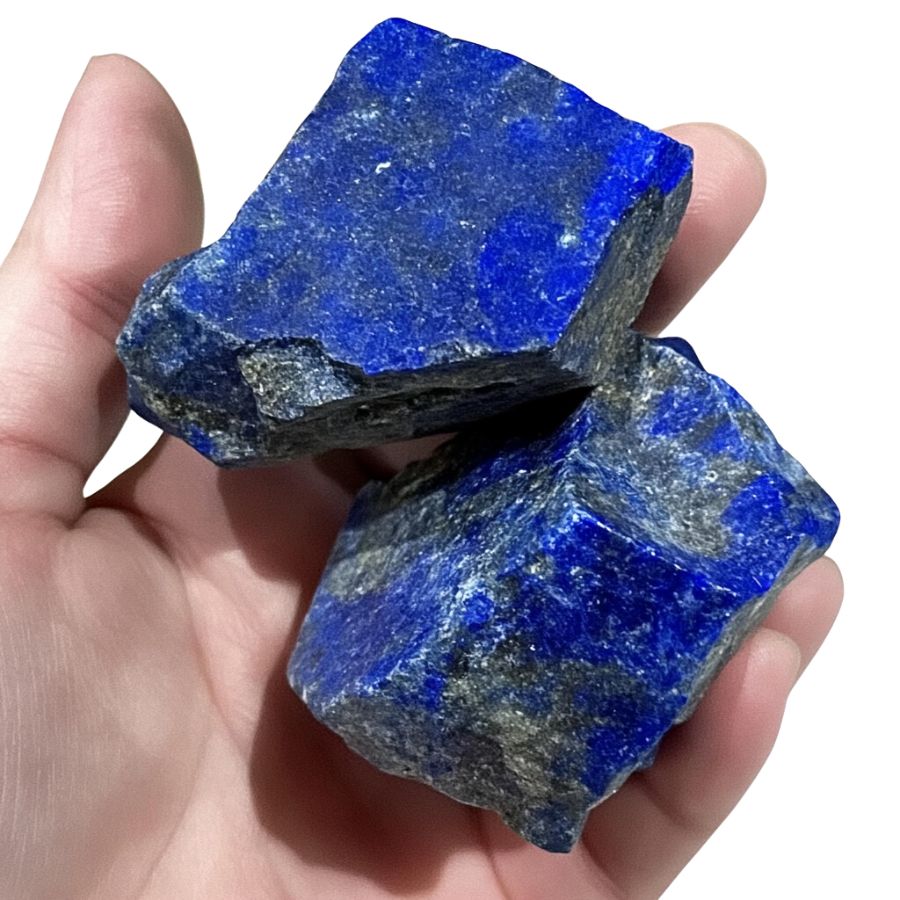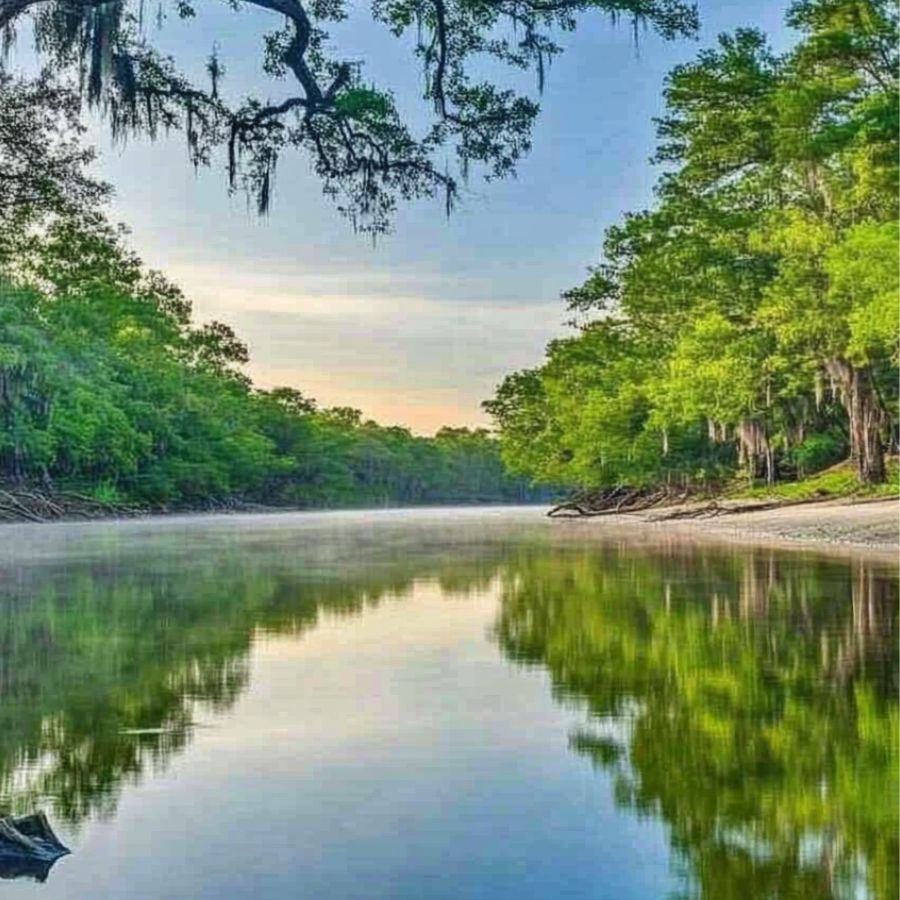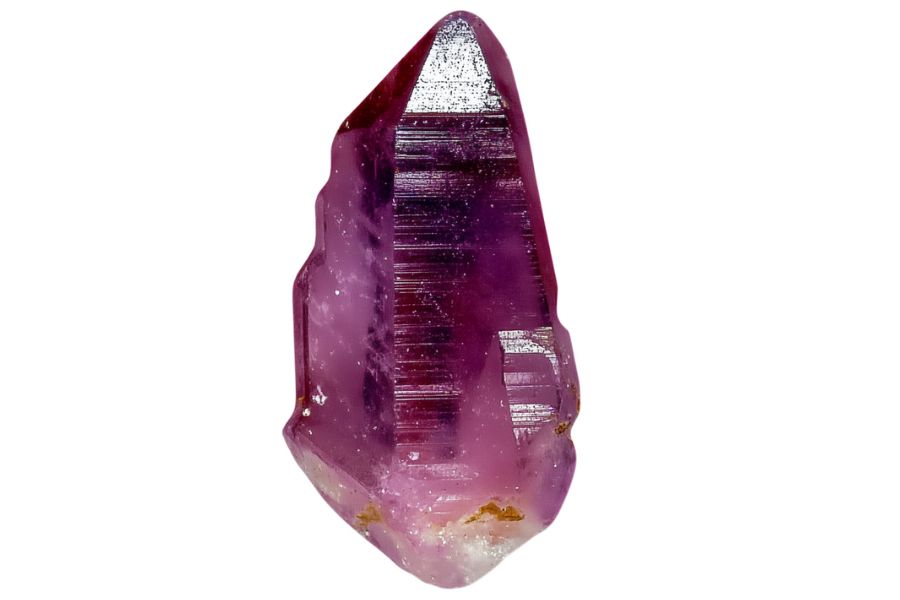Florida’s unique geology might surprise you. While most know it for beaches and limestone, the state actually sits on ancient marine deposits that occasionally yield unexpected treasures – including sapphires.
Many weekend rockhounds spend countless hours searching in the wrong spots, coming home empty-handed and frustrated. We’ve been there too, and we know that feeling.
That’s why we’ve put together this guide to Florida’s best sapphire hunting locations. We’ve done the research, talked to local collectors, and mapped out spots where you’re most likely to find these blue beauties.
How Sapphire Forms Here

Sapphires are corundum crystals, formed when aluminum oxide molecules arrange themselves in a hexagonal pattern under extreme pressure and high temperatures above 752°F.
Pure corundum starts colorless. The blue color happens when titanium and iron atoms replace some aluminum atoms in the crystal structure – we call this ionic replacement. The deeper the blue, the more titanium and iron present.
These crystals typically form in metamorphic rocks rich in aluminum but low in silica, often near limestone deposits.
The crystal growth occurs when hot fluids rich in aluminum move through rock fractures, slowly depositing material that builds the sapphire structure layer by layer.
Types of Sapphire
Sapphires come in a stunning variety of colors and formations, each with its own unique characteristics and value in the gemstone market.
Blue Sapphire

Blue sapphires showcase a range of blue colors, from light sky blue to deep royal blue. The most valuable ones display a vivid cornflower blue color with perfect saturation.
This distinctive color comes from the iron and titanium elements in the stone’s structure. The finest blue sapphires have excellent transparency and a pure blue color without any hints of gray or black.
When light hits them, they display a bright, vibrant glow that seems to come from within the stone. This internal fire makes them stand out. Another famous thing about them is that Princess Diana’s engagement ring featured a prominent blue sapphire.
These stones often show silk-like inclusions that create a soft, velvety appearance. When properly oriented, these inclusions can produce a star effect called asterism, creating a six-rayed star that moves across the stone’s surface as it’s tilted.
Padparadscha Sapphire

Padparadscha sapphires display a unique blend of pink and orange colors, reminiscent of a tropical sunset. The name comes from the Sinhalese word for lotus blossom, perfectly describing their delicate color combination.
These stones get their distinctive color from a precise mixture of chromium and iron elements. The presence of both elements in just the right amounts creates their signature sunset hue. This specific combination makes them incredibly rare.
Natural padparadscha sapphires often show color zoning, where different areas of the stone display varying intensities of pink and orange. This natural pattern adds to their charm and helps gemologists identify genuine stones.
The color must be subtle and delicate to be considered a true padparadscha. Too much orange makes it a regular orange sapphire, while too much pink classifies it as a pink sapphire. This narrow color range adds to their exclusivity.
Montana Sapphire

Montana sapphires are known for their unique color palette, including cornflower blue, teal, green, and parti-colored varieties. These stones often display a distinctive “steely” quality that gives them a modern, sophisticated look.
One remarkable feature is their exceptional clarity. Montana sapphires typically form with fewer inclusions than sapphires from other locations. This results in stones with outstanding transparency and brightness.
A notable characteristic of Montana sapphires is their ability to maintain their brightness even in low-light conditions. This feature, combined with their typically lighter tones, gives them excellent performance in various lighting environments.
The largest recorded Montana sapphire is housed in the Smithsonian Institution, showcasing the stone’s significance in American gemology.
Green Sapphire

Green sapphires display an incredible range of green shades. Some stones show a pure forest green, while others mix with teal or sage tones. The most prized ones have a bright, grassy green color that sparkles in any light.
These stones have a special way of changing appearance throughout the day. In natural daylight, they might look bright and vibrant, while in evening light, they can take on deeper, more mysterious tones.
A fascinating feature of green sapphires is their color zoning. Some stones show bands or patches of different green shades within the same crystal. This creates unique patterns that make each stone one-of-a-kind.
Many green sapphires also display pleochroism – they show different colors when viewed from different angles. This effect can make them appear blue-green from one angle and pure green from another.
Star Sapphire

Star sapphires display a remarkable star-shaped pattern that seems to float on their surface. This effect, called asterism, appears when light hits the stone. The star usually has six rays, though rare specimens can show up to twelve rays.
These stones come in various colors, including blue, pink, and black. The star pattern shows up best against darker backgrounds. The most valuable ones have a sharp, well-defined star that’s perfectly centered and visible from multiple angles.
The star effect comes from tiny needle-like crystals inside the stone. These crystals line up in specific ways to create the star pattern. The better these crystals are arranged, the clearer and more striking the star appears.
Quality star sapphires also show good transparency around the star pattern. The best ones let you see into the stone while still displaying a bright, clear star. This combination of clarity and asterism makes each stone unique.
Some famous star sapphires include “The Lone Star,” weighing 9,719.50 carats, and “The Star of Adam,” which is recognized as the largest pure blue star sapphire at 140.49 carats.
Color Change Sapphire

Color change sapphires possess an amazing ability to change their color under different types of light. In daylight, they might appear blue or violet. Under indoor lighting, the same stone transforms to purple or reddish-purple.
This color-changing effect happens because of special elements inside the stone. These elements absorb and reflect light differently depending on the light source. The more dramatic the color change, the more valuable the stone becomes.
The best color change sapphires show clear, distinct colors in both lighting conditions. Some stones might show subtle changes, while others display dramatic shifts. Each stone’s color change pattern is slightly different.
These stones often maintain good transparency, which helps showcase their color-changing ability. Clear stones with minimal inclusions that show strong color changes are particularly special.
Burmese Sapphire

Burmese sapphires are famous for their rich, velvety blue color. Their blue often has a slight hint of violet, creating a deep, saturated tone that appears almost royal. The color seems to glow from within the stone.
A special feature of these sapphires is their “silk” – tiny internal patterns that give the stone a soft, velvety appearance. This silk creates a beautiful effect when light hits the stone, making it look alive and vibrant.
The best Burmese sapphires have excellent transparency despite their deep color. They maintain their rich blue even in dim light, and their color appears even across the entire stone.
Yellow Sapphire

Yellow sapphires can range from pale lemon to deep golden yellow. The most sought-after ones show a bright, sunny yellow that seems to glow from within. This vibrant color stays consistent even in dim lighting.
These stones often have excellent transparency. Clear, clean crystals are more common in yellow sapphires than in other colored varieties. This clarity allows their color to really shine through.
Some yellow sapphires display interesting optical effects called silk. These are tiny internal features that create a soft, silky sheen across the stone’s surface. This effect adds depth and character to the stone.
The best yellow sapphires show strong fluorescence under UV light. This makes them appear even more vibrant and can create an interesting glow effect in certain lighting conditions.
Parti Sapphire

Parti sapphires showcase multiple distinct colors within a single stone. They feature sharp boundaries between each color zone rather than gradual blending. You might see combinations like blue and yellow, green and gold, or even three different colors in one stone.
Each parti sapphire has a unique color pattern. The way these colors are arranged creates interesting plays of light, almost like a natural abstract painting. When light hits these stones, each color zone responds differently, creating a dynamic visual effect.
Modern collectors value parti sapphires because no two stones look exactly alike. The various color combinations allow for creative and unique pieces, making them popular among those seeking something different from traditional single-color stones.
Pink Sapphire

Pink sapphires range from subtle ballet-slipper pink to rich magenta tones. The best stones show an even color distribution with a vibrant, pure pink without any brown or orange undertones.
A fascinating aspect of pink sapphires is their relationship to rubies. The distinction between a deep pink sapphire and a ruby often comes down to subtle differences in color saturation. This creates an interesting overlap in the gem world.
These stones often have excellent transparency, allowing light to pass through cleanly. This clarity, combined with their pink color, creates a bright, lively appearance that distinguishes them from other pink gemstones.
Natural, untreated pink sapphires with strong color are extremely rare. Most high-quality stones show a pure pink color without any purplish undertones, making them particularly desirable.
What Rough Sapphire Looks Like
Identifying a rough sapphire might seem tricky, but with a few tips, you can spot one even if you’re not a rock expert.
DON'T MISS OUT ON ANY GREAT FINDS!
While you're out searching for Sapphires you're going to find a lot of other interesting rocks and minerals along the way. The last thing you want to do is toss out something really interesting or valuable. It can be easy to misidentify things without a little guidance.
We've put together a fantastic field guide that makes identifying 140 of the most interesting and valuable rocks and minerals you will find REALLY EASY. It's simple to use, really durable, and will allow you to identify just about any rock and mineral you come across. Make sure you bring it along on your hunt!
Here’s how you can do it.
Watch for That Distinct Blue-Gray Color

Raw sapphire typically shows up in a grayish-blue to deep blue color, though it might look a bit muddy or cloudy.
Unlike the sparkly finished gems you see in jewelry, rough sapphires often have a dirty appearance, like a bluish pebble you’d find in a stream. Some pieces might even show patches of white or other colors mixed in.
Look for the Barrel or Spindle Shape

Most rough sapphires form in a distinctive hexagonal crystal structure. Think of a six-sided pencil that’s been slightly squished. Sometimes you’ll spot these hexagonal “barrels” even in weathered pieces.
If the crystal’s worn down, it might look more like a rounded pebble but usually keeps some of that six-sided pattern somewhere.
Check for a Glassy or Waxy Luster

Run your finger across the surface. Rough sapphires have this unique glassy feel, but not quite as shiny as quartz.
Even if it’s dirty, clean a small spot with water – you should see that glassy quality peek through. It won’t be metallic like pyrite or dull like common rocks.
Test Its Hardness with Simple Tools

Here’s a quick trick: try scratching the stone with a steel knife. Sapphires are super hard (9 on Mohs scale) and won’t get scratched.
But be careful – if you can scratch it, it’s probably not a sapphire. Also, real sapphires can easily scratch a penny or glass bottle.
Notice the Color Zoning

Here’s something cool – rough sapphires often show uneven color distribution. You might see patches or bands of different blue shades within the same stone.
Sometimes, they’ll have color zoning that looks like hexagonal growth rings when viewed from the top. This irregular coloring is actually a good sign – it’s typical of natural sapphires.
Tips on Where to look
Once you get to the places we have listed below there are some things you should keep in mind when you’re searching:
Sedimentary Rock Areas

Look for areas with metamorphic rocks, especially where there’s lots of corundum. These spots often have sapphire deposits hiding in layers.
Best bet? Check spots where rivers have cut through old rock formations – you might find some loose gems there.
Stream Beds & Gravel Deposits

River beds are goldmines for sapphires! Focus on gravel bars and sandy areas where water flow slows down.
During summer, when water’s low, dig through gravel using a simple screen or pan – just like gold panning, but you’re hunting for these blue beauties instead.
Old Mining Sites

Hit up abandoned mine sites, but stick to public access areas. While the big commercial operations have moved on, these places often have leftover deposits that are perfect for amateur rockhounds who don’t mind getting their hands dirty while sifting through the tailings and waste rock piles that still contain smaller, but totally collection-worthy specimens.
Pegmatite Outcrops

These coarse-grained rocks are sapphire hotspots. Look for big, exposed rock faces with streaky white veins. Bring a rock hammer and safety gear – you’ll need them to crack open promising chunks.
Some Great Places To Start
Here are some of the better places to start looking for sapphire in Florida:
Always Confirm Access and Collection Rules!
Before heading out to any of the locations on our list you need to confirm access requirements and collection rules for both public and private locations directly with the location. We haven’t personally verified every location and the access requirements and collection rules often change without notice.
Many of the locations we mention will not allow collecting but are still great places for those who love to find beautiful rocks and minerals in the wild without keeping them. We also can’t guarantee you will find anything in these locations since they are constantly changing.
Always get updated information directly from the source ahead of time to ensure responsible rockhounding. If you want even more current options it’s always a good idea to contact local rock and mineral clubs and groups
Suwannee River

The Suwannee River flows from southern Georgia into Florida, making its way to the Gulf of Mexico. This beautiful river stretches through Suwannee County, Florida, and is famous for its clear waters and white sandy bottom.
The river’s geology makes it special for rockhounds. Its bed contains limestone formations that were created millions of years ago when Florida was underwater. These formations now house different types of minerals and gems.
Along with sapphires, rockhounds can find fluorite, aluminum, iron, and magnesite in this area.
The best spots to look for gems are along the riverbanks and in the shallow parts of the river. The river also has many springs and underwater caves, which create perfect conditions for mineral formation.
Fort Drum Crystal Mine

Fort Drum Crystal Mine sits in Okeechobee County, Florida, about two hours southeast of Orlando. This old mining site has become a favorite spot for crystal hunters and rock collectors.
The rocks here tell an amazing story from 1.5 million years ago. Back then, this area was under an ancient sea. Now, these old sea creatures have turned into beautiful fossils. The most exciting finds are the calcite-filled clam fossils, which sparkle when split open.
While the main pit is now underwater, visitors can still search for sapphire and other treasures at the off-site campground. The mine owners bring fresh material from other spots for people to dig through.
Rock hunters should bring basic digging tools and water to wash their finds. The best hunting happens after it rains when the crystals shine brightest in the Florida sun.
Econfina River

The Econfina River flows for 44 miles through Florida’s Big Bend region, starting near Madison County and ending at Apalachee Bay. The river is special because it runs through different types of land – from pine forests to salt marshes.
The river’s bottom is made up of limestone rock, which makes it a good place for finding different kinds of minerals and stones.
The best places to look for sapphires are where the river changes from forest areas to open marshes. These spots often have exposed limestone and worn-down riverbanks where water has washed away softer materials.
The area also has lots of small streams and creeks flowing into the main river. These spots where water meets are good places to check for minerals and stones.
Peace River

The Peace River flows through DeSoto County in central Florida. The river is part of the famous Bone Valley region, known for its rich phosphate deposits.
The best spots to look for sapphires are along the river’s edges and in its sandy bottom. Horse Creek and Joshua Creek, which flow into Peace River, are also good places to search.
Many people find success by searching in areas where the water has naturally washed away top layers of sand.
Besides sapphires, you might find phosphate rocks and fossilized shark teeth. The river’s clear water and gentle flow make it easier to spot stones, especially after it rains when new material gets exposed.
Hillsborough River

The Hillsborough River flows for 60 miles through central Florida, starting at the Green Swamp and ending in Tampa Bay. This river is famous among rock collectors because of its rich variety of minerals and gemstones.
The river’s waters have shaped unique geological features over 27,000 years. These features make it perfect for finding different types of gems and minerals. Besides sapphires, you can find other beautiful stones here like moonstone, amethyst, and quartz.
The best spots to look for sapphires are in the areas around Hillsborough River State Park. The river’s bed contains small rocks and minerals that have washed down from upstream over many years.
The river banks also have spots where minerals collect naturally. During dry seasons more areas become easy to search. Local rock collectors often visit after rainstorms, as new minerals can be exposed by the flowing water.
Places Sapphire has been found by county
After discussing our top picks, we wanted to discuss the other places on our list. Below is a list of the additional locations where we have succeeded, along with a breakdown of each place by county.
| County | Location |
| St. Johns | St. Johns County beaches |
| Hillsborough | Ballast Point |
| Charlotte | Englewood Beach |
| Pinellas | Dunedin area |
| Jackson | Cottondale |
| Gadsden | Quincy Mines |
| Jackson | Jackson County quarries |
| Washington | Washington County stream banks |
| Washington | Chipley limestone exposures |
| Marion | Cross Florida Barge Canal banks |
| Levy | Levy County tributaries of the Suwannee River |
| Lafayette | Lafayette County tributaries of the Suwannee River |
| Gilchrist | Gilchrist County tributaries of the Suwannee River |
| Polk | Polk County area quarries and pits |
| Polk | Lakeland area |
| Sarasota | Caspersen Beach south of Venice |
| Sarasota | Venice Beach |
| Duval | Jacksonville Beaches |
| Palm Beach | Big Brook Preserve in Colt’s Neck area |
| Polk | Fort Meade area between Tampa and Orlando |
| Martin | Blowing Rocks Preserve on Jupiter Island |
| Monroe | Key Largo canal cuts |
| Citrus | Gulf beaches from Ft. Myers to Crystal River |
| Hillsborough | Tampa Bay |


